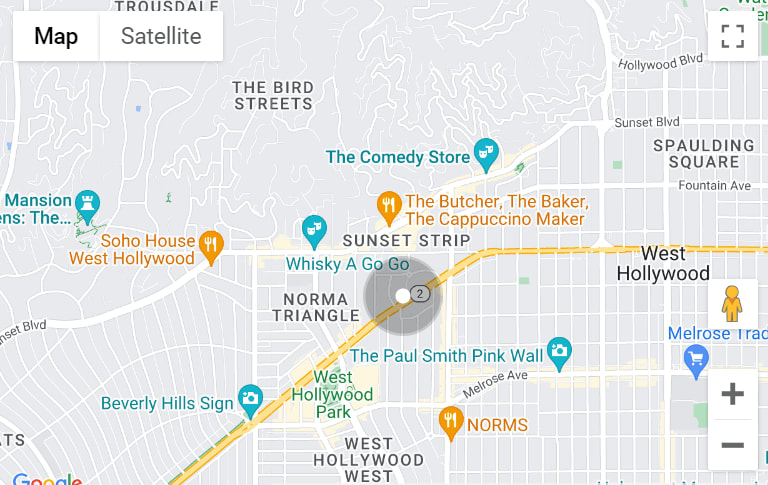By Lori Hoffman-Chlapowski
“Where have all the Houses Gone?” asked the New York Times, followed by the Wall Street Journal announcing “The Housing Market is Crazier than its been Since 2006 ”. Supply is low and bidding wars are the norm - with negotiability nearly non-existent.
First time home buyers have seen an erosion of their buying power, as cash-rich downsizers swoop in with winning offers over list price. Downsizers nevertheless fear that they will be unable to find a home as prices skyrocket. Everyone feels stuck and frustrated. So what's a buyer to do? Here is some of the key advice I give to my buyers:
Rule # 1: Keep it Real and Avoid Burnout
- The key is to understand what you can comfortably afford and be upfront with your agent. With homes trading at 98-100+% of their list price or more, touring homes above your price point in hopes of “getting a deal” (particularly with updated homes) is a recipe for failure.
- A good agent will identify homes that are overpriced and will suggest seeing them. Sending your agent a barrage of texts asking to see homes above your price range, hoping for a unicorn deal, inexorably leads to frustration. Touring a few homes above your price point may help you understand the market; continuing to tour such homes is unproductive.
- If a home seems “perfect” and “move in ready”, understand that other buyers see it the same way. If it is at the top of your price point, understand that there will be stiff competition.
- When it comes to “move in ready” homes, you will do best looking below your top price point, knowing that those homes will likely be bid up.
- For downsizers, acknowledge that you likely received a premium on the sale of your home and you have buying power. It’s the same market - understand that when you benefit on one end, you have to pay on the other.
- The takeaway: stay in your lane with the understanding that list price is most often a starting point. Be patient and you will eventually prevail.
Rule #2: A Diamond in the Rough versus the Bright Shiny Object
- New and move-in ready homes command a premium. Buyers should be prepared to pay over what they may think the owner invested in renovating the home. Homes sold by investors can offer a shortcut to a renovated home or they may just have shiny new finishes distracting from deeper maintenance issues.
- Buyers need to look carefully at work that was done. Glossy professional photos may depict a new-looking home, but a good agent can help a buyer recognize slap dash “smoke and mirrors” updates even before an inspection. If you are paying a premium for a home in which old wallpaper was painted over to look fresh and new, you should be aware of this. Experienced local agents are often familiar with a property’s history, and may have seen the home before work was done.
- The diamond in the rough category of homes is at the other end of the spectrum. No longer overlooked, these homes can offer value to buyers willing to put in the work. The upside of these homes is that often there are not multiple offers, giving buyers the opportunity to negotiate and truly assess the condition of the home.
- Inspections are an opportunity to evaluate work that was done, or in the case of a home that needs work, help you prioritize what you will need to do.
Rule #3: Understand Down payments, Appraisals and Cash - in Advance
- The Seller and buyer agree on a price - but when a mortgage is involved, a lender also gauges that price. With prices rising, whether a home will appraise for the sale price can become an issue.
- Sellers are aware of this potential - and do not want the price renegotiated later down the line. This is why cash is king. But buyers can make a strong up-front case for their mortgage with a strong downpayment. If a property appraises for less than the sale price, but there is sufficient equity in the form of a down payment, the loan will be approved.
- Most lenders will agree to up to 90% exposure, which means if a buyer is able to put down 30% of the selling price, and the house doesn’t appraise at the full value, a lender will likely still underwrite the loan. Buyers need to be aware of this potential, and be ready to show a seller that they have a strategy for dealing with an appraisal shortfall - one they consider in advance.
Rule #4: To Waive or Not to Waive
This February, the Wall Street Journal reported on widespread buyer’s remorse over homes purchased last year, largely arising out of a failure of buyers diligence.
- Waiving a mortgage contingency for buyers can be risky, but sometimes it is the only way to win a bidding war. To waive a mortgage contingency depends largely on a buyer’s individual financial situation. Buyers must be able to discuss risks with their agent and their attorney. An experienced trustworthy team is imperative.
- Buyers may be tempted to waive inspections, understanding that all homes have issues, but then worry about what they might be missing. In my opinion rarely should all inspections be waived, but assurances can be made to the seller that the inspections are being conducted for the buyer’s edification, not as means of renegotiating price.
- A well crafted offer drafted by a good buyer’s agent can thread the needle between flying blind and making clear to the seller that the inspections are not being conducted as a means of renegotiation of price. Thus, it has never been more important to have trustworthy representation on your side.
